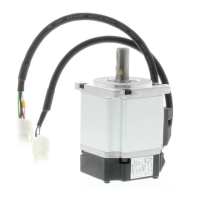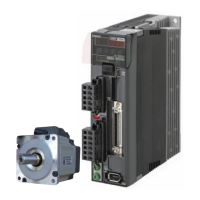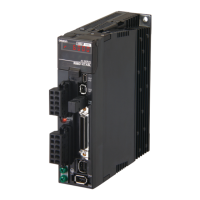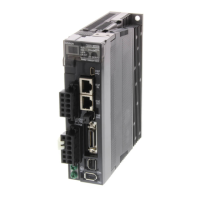8-7
8-3 Troubleshooting
8
Troubleshooting
14 Overcurrent Occurs when the Servo
Drive is turned ON.
• Control PCB error • Replace the Servo Drive.
• Servomotor power line is
short-circuited or ground-
faulted between phases.
• Repair the short-circuited
or ground-faulted wire.
• Measure the insulation
resistance at the Servo-
motor and, if there is a
short-circuit, replace the
Servomotor.
• Miswiring between
phase U, V, or W and
ground.
• Correct the wiring.
• Servomotor winding is
burned out.
• Measure the wire wound
resistance, and if the
winding is burned out, re-
place the Servomotor.
• The relay for the dynamic
brake has been conse-
quently welded.
• Do not frequently input
the RUN Command In-
put.
• Do not operate the sys-
tem by turning the Servo
Drive ON and OFF.
• Servomotor non-confor-
mity
• Use a Servomotor that is
appropriate for use with
the Servo Drive.
• The pulse input timing is
too fast.
• Wait 100 ms min. before
inputting pulses after
turning ON the RUN
Command Input (RUN).
• The resistor in the Servo
Drive is abnormally over-
heating.
• Reduce the ambient tem-
perature of the Servo
Drive to 55°C or lower.
• If the relay does not click
when the power supply is
turned ON, replace the
Servo Drive.
16 Overload Occurs when the Servo
Drive is turned ON.
• There is an error in the
Servomotor wiring (e.g.,
the wiring or the contacts
are faulty).
• Wire the Servomotor
Power Cable correctly.
• The electromagnetic
brake is ON.
• Reset the brake.
• The Servo Drive is faulty. • Replace the Servo Drive.
Occurs during opera-
tion.
• The actual torque ex-
ceeds the rated torque.
• The starting torque ex-
ceeds the maximum
torque.
• Review the load condi-
tions and operating con-
ditions.
• Review the Servomotor
capacity.
• An unu
sual noise
oscilla-
tion or vibration is caused
by faulty gain adjustment.
• Adjust the gain correctly.
• The Servo Drive is faulty. • Replace the Servo Drive.
Alarm
code
Error
Status when error
occurs
Cause Countermeasure
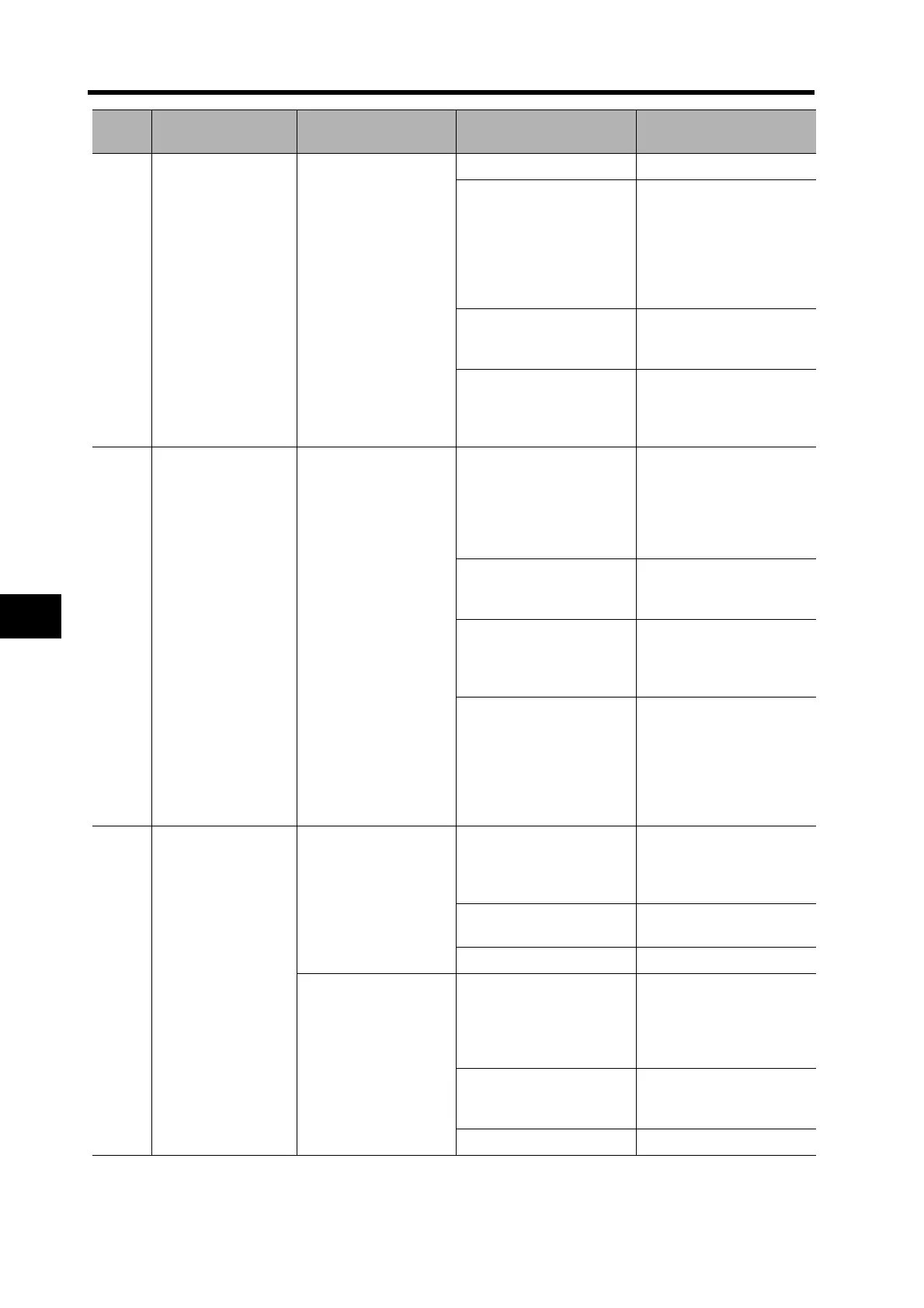